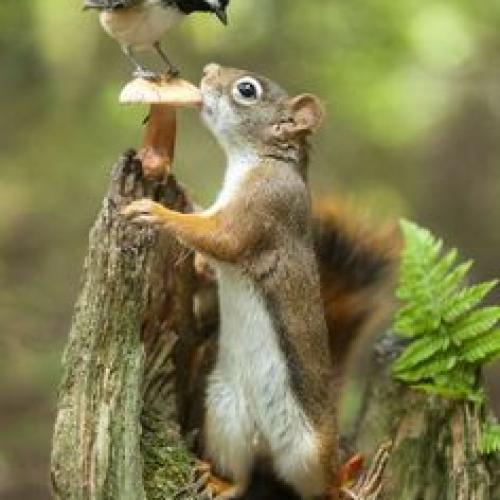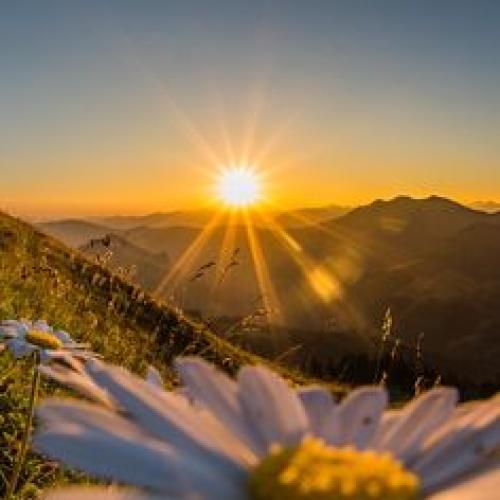“Miracles of Nature” documentary, the focus shifts to the unique natural wonders and cultural traditions of various regions, starting with Southern Moravia in the Czech Republic. Orchids, including the rare “lady slipper,” thrive in the meadows, and the region’s inspiring landscapes, including the pristine White Carpathian Mountain Range and the Manual Meadow Mowing Competition, are highlighted. The episode then explores the natural wonders of Cuba, including the peaceful River Morava, the stunning Yavor Jit caves, and the incredible spectacle of red crabs during their mating season. The documentary then moves on to the Matanzas province in Cuba, known for its palm groves, orange plantations, and the controversial practice of cockfighting. The episode concludes with a journey to the Holy Land in Israel, where the focus shifts to the strategic importance and historical significance of the Golan Heights. Despite the harsh conditions, the area has attracted spiritual seekers for millennia and is home to ancient cities and fortifications. The documentary also touches upon the modern history of the Golan Heights and its significance to the Jewish and Christian faiths. The episode concludes with a look at the Sea of Galilee, a primary source of drinking water now threatened by overuse, and prays for peace in the holy land and the return of bountiful catches for the fishermen.
Miracles of Nature,” the focus shifts to the Czech Republic, specifically the region of Southern Moravia. Contrary to popular belief, orchids are not exclusive to tropical climates; they also flourish in Europe, as evidenced by their growth in this region. The episode also explores the cultural traditions of the people, including the initiation ritual of the VNV ride of the Kings, which is not unique to African tribes but is also practiced in Central Europe. The region is predominantly agricultural, and the locals have a deep appreciation for the land’s bounty, as seen in the annual Manual Meadow Mowing Competition. The natural beauty of Southern Moravia is further highlighted by the pristine White Carpathian Mountain Range and the war memorial erected in memory of American pilots who died during World War II. The region’s inspiring landscapes have long influenced local poets, who have penned touching verses in praise of the countryside.
The focus shifts to the unique flora and fauna of Moravia, a region in the Czech Republic. Orchids, including the rare and endangered “lady slipper,” thrive in the meadows, and manual mowing is done to preserve these delicate plants. The service tree, a unique species that requires bird digestion to reproduce, is also highlighted, along with the ancient tradition of making fruit schnaps from its fruit. The region is known for its wine production, particularly the Moravian muscat, and the giant sea tree, which may live up to 3,000 years, is also featured. In another part of Moravia, the Regal Town of Olomouc is showcased, where poppy seeds are used to make a local cake, and hops, a characteristic Czech plant used to make beer, are also grown. The region is known for its laid-back ambiance, and a bridge built in 1592 is a local landmark, despite being damaged in the tragic floods of 1997.
The focus shifts from Europe to Cuba and the natural wonders it holds. The River Morava, once a destructive force in 1997, is now a peaceful body of water teeming with freshwater fish and considered a fishing paradise. Nearby, the Boof Castle adds to the picturesque scenery. The Yavor Jit caves, with their stunning stalactite formations, are a geological marvel. The most intriguing formations called the Eccentric stalactites, seem to defy gravity and grow into bent tubes. The curtain formation, with its high iron content, even appears to light up red. In Cuba, the red crabs offer an incredible spectacle during their mating season when they make their way to the seashore in large numbers. Despite the challenges, they persevere, even crossing roads and encountering predators. The region also boasts colorful wildflowers, pineapples, and picturesque nooks with meandering streams and high waterfalls. Overall, P Del Rio in Cuba is a testament to the Caribbean’s natural beauty and miracles.
The focus shifts to the Holy Land in Israel. The episode begins in the Southern region, where despite the harsh conditions, people have sought spiritual enlightenment and survival. One such place is the Inti Oasis, a desert oasis that has attracted prophets and spiritual seekers for millennia. King David is said to have found refuge here, hiding from King Saul. The oasis, named after the goat kids or Ibexes that roam its steep slopes, has been inhabited since ancient times. The documentary also highlights the significance of the Inti Oasis in biblical tales and its role as a spiritual retreat. The episode continues with a journey to the Golan Heights and concludes on the shores of the Sea of Galilee.
The focus shifts to the strategic importance and historical significance of the Golan Heights in Israel. The Golan Heights, a volcanic plateau in northern Israel, has been a source of conflict due to its military advantage over surrounding states. The area has been inhabited since pre-biblical times, with evidence of ancient civilizations and fortifications. One such fortification was the city of Gamla, which was famously defended by Jewish rebels against the Romans in 66 AD. Despite its strategic importance, the area has also been the site of brutal conflicts throughout history, including during the Crusades and the medieval period. The documentary also touches upon the modern history of the Golan Heights, which has been a source of conflict between Israel and Syria, culminating in the Six-Day War in 1967 and the subsequent use of Soviet ammunition by the Arab coalition in 1973.









